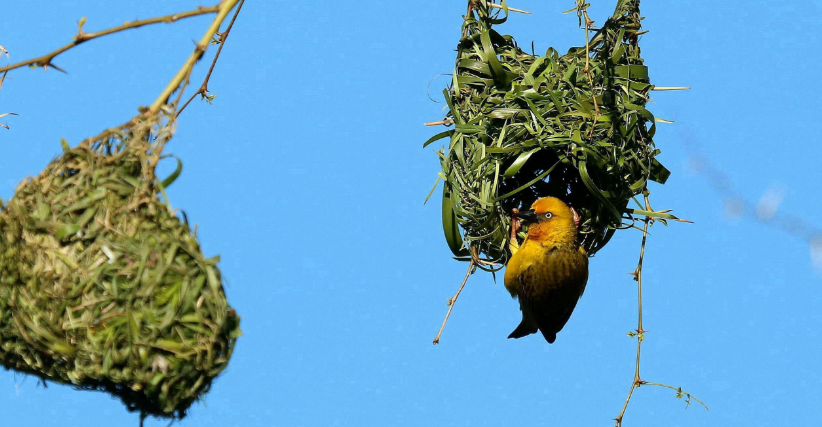I revealed in the tranquil and beautiful world of South Africa from my first step off the plane in Johannesburg. Out in the wild the scenery was poetic;the rays of the setting sun colored the reddish-brown rocks looming high over the horizon, lions crouched on the rocks, warily gazing forward, and Zebras and gnus quietly chewed while now and then passed by some baboons. In the distance, various nameless plants are swaying in the wind. Their fragrant flowers attract many insects and birds. Nearby, some birds caught my eyes and I couldn’t help but smile.
The birds were weaverbirds. There are 140 different types of weaverbirds throughout Africa, Australia, South Asia and Southeast Asia, Weaverbirds belong to the family Ploceidae. They are characterized by a short, hard, conical beak that allows them to easily feed on seeds. On average, the birds range from 8cm to 20cm depending on the species. Females are neutral colors, while males can be mixtures of red, yellow and black.
Taking a closer look, I found that the birds were congregating around several nests in a tree. Some of the nests were already done, some semifinished, and others had just been started.
Weaving a nest is an intricate project. The male builds nest in order to attract a female. He will find fresh grasses, leaves and twigs to use to weave the nest. First he fastens a blade of grass to a firm branch, he then builds the outer shell of the nest using longer pieces of material. The weave is done using an “above and below” technique which makes the structure stronger. The entire process encompasses seven stages, and takes several days. The end result is an elliptical or kidney shaped nest hanging from a branch. This nest is where this species got its name.
Once the male has completed the nest he is ready to attract a female. The nest shows off his innate skills and potentially good genes. Weaverbirds are born knowing how to build a nest, but they do improve with practice. Prospective females will examine the bachelors nest and then either show their disdain for his skill by destroying it, leave and find another mate, or move in. If a female destroys the nest, the male has no choice but to start over.
Generally, these birds live in colonies and will return the same sites year after year to build their nests. But this and other habits do differ subtly between each of type of weaverbird.
Then, before my eyes, the birds rise up and take wing, possibly going to look for more materials to complete the building of their nests. I thank them silently and entreat them to build strong and cozy nests in which to raise their young.



























